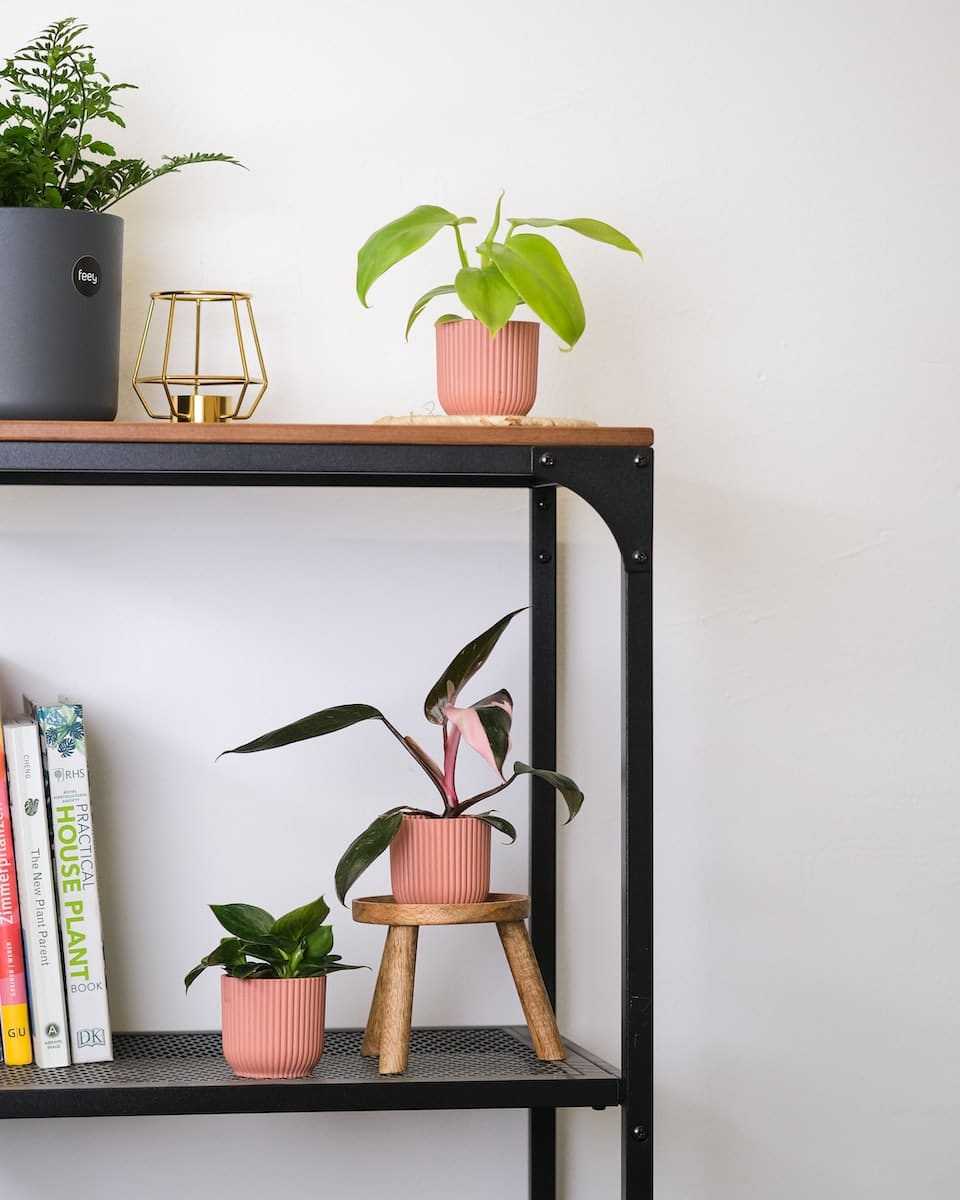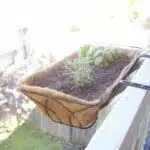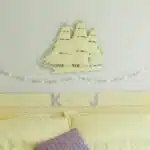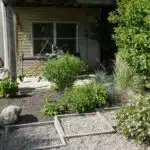As the trend of home gardening is on the rise, more and more people are looking for creative ways to display their plants. A great way to showcase your garden and add a touch of personality to your patio or balcony is with a towering ladder planter stand. In fact, recent studies have shown that DIY projects such as these have increased by nearly 20% in the last year!
If you’re looking for an easy, budget-friendly way to give your outdoor space a unique twist, then a towering ladder planter stand is just the thing! Not only does it help create a vertical garden that will draw all eyes, but it also serves as an eye-catching focal point for your outdoor area. With careful planning and some basic tools and materials, you can easily assemble this stylish piece of outdoor decor in no time.
Ready to get started? Whether you’re an experienced DIYer or just starting out, this article will provide all the information you need to construct your very own ladder planter stand from scratch. We’ll walk through each step of the process in detail so that you can successfully build something special for your patio or balcony—no professional experience required!
Gather Materials And Tools
Before getting started, you’ll need to gather the necessary materials and tools. This project requires wood, a saw, screws and drill, a hammer and nails, some paint or stain of your choice, and soil.
If you don’t already have these items at home, they can usually be found at your local hardware store. Make sure to double-check that all the pieces are in good condition before buying them! You don’t want any splinters or weak pieces in your ladder planter stand.
Once you’ve gathered everything you need, it’s time to cut the wood to size. This is where an understanding of measurements comes in handy. If you’re not confident in your abilities here, consider asking for help from someone more knowledgeable or searching online tutorials for further guidance.
Cut Wood To Size
Coincidentally, building a ladder planter stand for your patio is not as daunting as it might seem. All it takes is a few materials, some tools, and the right measurements. Now, let us move on to the second step of this project – cutting the wood to size.
The first thing to do is measure and mark out the lengths of each piece that you need to cut. Once you have done that, use a saw of your choice to make precise cuts in all the pieces. Make sure that you wear protective equipment like safety glasses while doing this step. If possible, use sandpaper or a file to smooth out any rough edges on the pieces before assembling them together.
This brings us one step closer to having our very own homemade ladder planter stand for our patio! We are now ready to assemble the stand base so we can have something sturdy and beautiful in no time at all.
Assemble The Stand Base
Once the wood for the ladder planter stand has been cut to size, it’s time to assemble the stand base. This is an important step in creating a sturdy and secure structure. To begin, use two of the four boards that have been cut to length and attach them at the top and bottom using screw connectors. Make sure they are oriented in opposite directions so that when you put the other two boards on top, there will be enough stability for the standing structure.
Next, attach one of the remaining boards to either side of the assembled base. This will be used as support beams for stability. Secure each board with screws or nails into pre-drilled holes, making sure to keep them level so that your ladder planter won’t lean or wobble once it’s constructed.
With all pieces attached, lay out your ladder planter stand base on a flat surface and ensure everything is secured tightly together before moving onto attaching legs for the final stages of assembly.
Attach The Legs To The Stand Base
The next step is to attach the legs to the stand base. This is an important part of the structure, and it’s important that it’s done correctly. You’ll need your drill and screws to do this. Start by laying the stand base flat on the ground, with the two ends facing up. Then take each leg and match it up with one of the ends of the stand base. Make sure they’re at a 90-degree angle before drilling in your screws. Once all four legs are securely attached, you can move onto attaching the ladder steps to the stand base.
For this bit, you’ll need some more screws and your drill again. Take one ladder step and place it on top of two adjacent legs so that it’s perpendicular to them both. Drill in two screws into each leg so that the ladder step is securely attached. Repeat this process for each additional ladder step until all five have been attached to your stand base. To make sure everything is secure, check every screw connection once more before standing back to admire your work!
Now you have a sturdy, tall planter stand ready for plants!
Attach The Ladder Steps To The Stand Base
Now that the legs have been attached to the stand base, it’s time to attach the ladder steps. To do this, you’ll need four more 2x4s cut to fit between the legs and four braces cut to fit along the sides of each step. Begin by positioning the steps between the two legs and marking where they should be secured. Then, secure them from underneath using wood screws or lag bolts.
Next, attach your braces on either side of each step using wood screws or lag bolts. Make sure to pre-drill holes in each brace before securing it in place. This will help ensure a strong bond with your ladder steps and make sure that they don’t wiggle out of place over time. Finally, add some decking screws along the edges of each step to give them additional strength and stability. With that done, you’ve successfully completed this stage of your planter stand project!
Now it’s time to assemble the planter boxes. You’ll need four 2x6s for each box, as well as some 1x2s for trimming out around the top and bottom edges. Start by cutting all your boards according to size and then assembling them together with wood screws or nails. Once all four boxes are put together, you can move on to attaching them securely onto your ladder steps!
Assemble The Planter Boxes
What a coincidence! We’ve now reached the sixth step in our DIY project of assembling a towering ladder planter stand for our patio. In this step, we’ll be putting together the planter boxes that will eventually be attached to the ladder steps.
First, we’ll measure and cut out the boards that will create the box frames. We’ll need four identical pieces measuring 22″x7″, two pieces measuring 7″x7″, and four pieces measuring 22″x3″. With these boards, we’ll construct two rectangular boxes with an open top, each roughly 22″x7″. Once these are nailed together, we can then proceed with adding a bottom board to each box.
Next, it’s time to add some drainage holes. To ensure our plants don’t suffer from root rot, we’ll have to drill several quarter-inch holes along the bottom of each box. This way excess water can seep out of the soil without any trouble. With this done, our planter boxes are ready to go!
Now that everything is cut and ready to assemble, it’s time for us to attach these planter boxes onto our ladder steps – something that would make this DIY project look even more visually appealing!
Attach The Planter Boxes To The Ladder Steps
Now that the planter boxes have been assembled, it’s time to attach them to the ladder steps. This is a critical step in creating your own towering ladder planter stand for your patio. It requires attention to detail and a steady hand, as well as some basic tools.
First, you’ll need to figure out where you want each planter box on the ladder steps. Then, you’ll have to measure the space between the rungs of the ladder and make sure that your chosen planter will fit properly in the space between them. After that, you’ll need to use screws or brackets so that each box is firmly attached. You can also use wire or heavy-duty tape for extra support if needed.
Once all your boxes are securely fastened in place, you’re ready to move on to adding soil and plants – and start enjoying your beautiful new patio feature!
Add Soil And Plants
Climb up the ladder of success to create a beautiful, towering planter stand for your patio. With just a few simple steps and materials, you can bring life to your outdoor space. Now, all that’s left is to add soil and plants!
Adding soil and plants to the planter boxes attached to the ladder steps will complete the look of this DIY project. Start by deciding which types of flowers or vegetables you’d like to plant, if any. Once you have decided on your plants, it’s time to go shopping for potting soil and the plants themselves. If you are using smaller pots, fill them with soil and then place each pot onto its corresponding step on the ladder stand. If you are planting directly into the planter boxes, simply fill them with soil before adding your chosen plants.
Finally, be sure to water your newly planted garden regularly in order for it to flourish. With some care and attention, your towering planter stand will soon become an eye-catching piece in your patio and will give off an inviting vibe! Now that everything is ready with the planter stand itself, it’s time to attach it to the patio.
Attach The Ladder Stand To The Patio
Attaching the ladder stand to the patio is a necessary step in order to secure it in place. It’s important to make sure that the ladder is firmly connected and will not come off or wobble when used. To do this, you’ll need a few tools, such as drill bits and screws, as well as some strong adhesive.
First, use the drill bits to make holes into each of the steps on the ladder planter stand where you want to attach it to the patio. Then, use strong screws designed for outdoor projects to securely fasten your planter stand onto the patio. Finally, add some additional adhesive for extra security, making sure it’s fully dried before adding soil and plants.
Once you’ve completed these steps, you’re almost done! The next section shows how to complete your project by adding finishing touches so that your towering ladder planter stand looks perfect on your patio.
Finishing Touches
The task of sprucing up your patio can be daunting, but it doesn’t have to be. Just like a chef putting together the last few ingredients to finish a masterpiece dish, adding the finishing touches to your towering ladder planter stand is what ties everything together. One way to give it an extra special touch is by adding plants that will bring life and color to the atmosphere.
For this project, consider using drought-tolerant plants like succulents or herbs. These type of plants require little maintenance so you won’t have to worry about them taking away from any leisure time you might have planned for your patio. Plus, their unique shapes and sizes add a nice visual element that will draw people’s attention. Additionally, if you’re in a cooler climate, think about using perennials instead as they can tolerate cold temperatures better than annuals.
Although there are countless ways to make your diy ladder planter stand even more beautiful, these tips should provide some guidance on how to choose the perfect plants for your project. Even though this may seem like the final step in creating your dream patio oasis, it’s just the beginning of years of enjoyment and relaxation!
Tips For Plant Selection
Before you can start shopping for plants to go in your ladder planter stand, it’s important to choose the right ones. In this step, we’ll discuss some tips for plant selection.
When picking out plants for your ladder planter stand, it’s important to consider the size of the plant and how much space it needs to grow. Choose plants that don’t require too much space and won’t outgrow their planters. It’s also wise to select varieties that do well in full or partial sun, depending on where you’re placing your stand and what kind of growing conditions are available. Additionally, think about whether you’d like an evergreen or flower-bearing plant; both have their advantages.
Finally, be sure to pick plants that will thrive in your climate and soil type. Depending on where you live, certain species may not survive year-round and may require extra care during extreme temperatures or weather events. By taking all of these factors into account when selecting plants for your ladder planter stand, you can create a beautiful display that will last for years to come. From here we’ll look into choosing the right location for your stand so it can best show off your new garden feature.
Choosing The Right Location
Once you’ve gathered the materials, it’s time to decide where to place your ladder planter. Choosing the right location is essential to ensure your plants get enough sun and stay looking their best.
Start by considering the amount of sunlight available for various spots in your patio. If you have a lot of trees, then be sure to pick a spot that gets direct light for at least six hours a day. Once you settle on a spot with plenty of sunshine, make sure it’s near a source of water so that watering won’t be an issue.
It’s also important to consider how much space you have available for your planter stand. Measure out the area and make sure it’s wide enough and tall enough that won’t get crowded by other furniture or decorations when finished. With this information in hand, you’ll be ready to start constructing your DIY ladder planter stand and selecting the perfect plants for it!
Care And Maintenance
According to the National Gardening Association, Americans spent 37.7 billion dollars on lawn and garden care in 2017. With such an investment of time and money, it’s important to understand how to properly care for your ladder planter so that it can last for years. The following section provides tips on how to best maintain your towering ladder planter stand for your patio.
The first step in taking care of your ladder planter is ensuring that the wood remains weatherproofed year-round. This can be done by using a wood sealant or paint finish every few months or as needed depending on the climate and environment where you live. Additionally, you should regularly check for signs of rot or other pest damage and make necessary repairs promptly if any issues arise.
Finally, it’s also important to keep up with routine cleaning and maintenance such as wiping down the ladder with a damp cloth or gentle detergent every couple of weeks to remove dirt, dust, and debris build-up. Doing this will help keep your ladder looking its best while also preventing any potential mold growth due to moisture accumulation over time. From here we’ll move onto staining and painting ideas that can give your ladder planter an extra touch of personal style!
Staining And Painting Ideas
When it comes to adding a personal touch to your DIY ladder planter, staining and painting are two easy ways to customize your creation. Staining allows you to bring out natural wood grain tones, while painting can be used to add a splash of color. If you’re feeling creative, you might even want to combine the two techniques for a truly unique look.
To stain or paint your ladder planter stand, you’ll need a few supplies like sandpaper, primer, and brushes. Start by lightly sanding the surface and wiping away any dust before applying a coat of primer for extra protection. Once that’s done, apply your chosen stain or paint using several thin coats rather than one thick one. Finish up with a sealant or topcoat for extra durability against the elements.
No matter which method you choose, take some time in between each step to let the materials dry completely before moving onto the next step. This will ensure that your project looks its best when it’s finished!
Troubleshooting Common Issues
It’s possible to create a beautiful and towering ladder planter stand for your patio. But what if you run into some issues along the way? Let’s investigate the truth of this: troubleshooting common issues could be an important part of building a DIY ladder planter stand.
As with any DIY project, there will likely be some bumps in the road. For example, make sure you use a good quality wood sealer to protect your wooden ladder planter from moisture and humidity. If you don’t seal it properly, it might warp or rot over time. Additionally, consider how much weight your ladder can support when deciding which plants to include in your planter stand. Heavier plants may require additional supports on the sides of the ladder, so be sure to factor that into your design.
Finally, remember that a little extra effort put into planning and preparation can go a long way in ensuring success with this project. Take the time to measure out everything before assembling and follow the instructions carefully for best results. With these tips in mind, you’ll have no problem creating a stunning DIY ladder planter for your patio!
Frequently Asked Questions
What Is The Best Type Of Soil For The Planter Boxes?
When building a ladder planter stand, it’s important to think about the soil that will be used in the planter boxes. The right type of soil can help ensure that plants will thrive and grow healthy.
For DIY ladder planters, it’s best to use a light, nutrient-rich potting soil mix. This type of soil contains essential nutrients for plant growth and is designed to drain well—which is especially important with tall planters like ladder stands. It’s also important to make sure that the potting mix isn’t too heavy because this can weigh down the structure of the ladder stand.
When choosing potting mix for your DIY ladder planter, look for one that contains peat moss, vermiculite, perlite, and/or coconut coir. These components help promote drainage while retaining moisture and nutrients necessary for plant growth. Additionally, you may want to consider adding an organic fertilizer to your potting mix before filling up your planter boxes. This will provide an extra boost of nutrition so that your plants are able to flourish in their new home!
How Do I Know If The Ladder Stand Is Secure On The Patio?
When it comes to diy projects, safety should always be the first priority. This is especially true when constructing a towering ladder planter stand for your patio. In order to keep your project secure and safe for use, you need to make sure that the ladder stand is stable on the patio surface.
The most important thing to consider when determining if the ladder stand is secure is the weight of the planter boxes. If they are too heavy, they may pull the ladder off balance and cause it to topple over. Additionally, you should check that all of your screws and bolts are tightly secured before loading up the planter boxes with soil and plants.
To ensure that your ladder stand stays in place, you can add additional support by using a wood brace or attaching it to one of your home’s walls or posts. You can also use stakes or other anchors that are specifically designed for this purpose. With these measures taken, you can rest assured that your DIY ladder planter will remain secure on your patio for years to come!
Can I Use Other Types Of Plants In The Planter Boxes?
Have you ever thought of using a ladder planter to transform your patio into a stunning garden? Have you wondered if the ladder planter would be secure enough, or if it could only hold certain types of plants? In this article, we’ll explain how you can DIY your own towering ladder planter stand for your patio, and answer questions like whether you can use other types of plants in the planter boxes.
First, let’s talk about the materials needed to make the stand. You’ll need wood boards, treated lumber, screws and eyehooks. To ensure that the stand is sturdy and secure on your patio, make sure to attach the boards firmly with screws and eyehooks. Additionally, use pressure-treated lumber to protect against fungus or rot from moisture or rain.
Now that we’ve gone through what materials are necessary for constructing a secure stand for your patio, let’s move on to what kind of plants will work best in a ladder planter. You can use almost any type of plant; small shrubs or flower pots work great! If you’re looking to add height and texture to the space, potted trees like ficus or rubber trees are an ideal option. With proper care and maintenance, these plants should thrive in your planter boxes throughout all four seasons!
So there you have it – with just a few simple materials and some creative ideas for plants, you can turn any outdoor area into a beautiful garden oasis with a DIY towering ladder planter stand!
What Are The Best Tools To Use For Cutting And Assembly?
“Measure twice, cut once” is an adage that rings true when it comes to DIY projects like the ladder planter stand. It’s important to have the right tools and materials on hand before beginning assembly so that you don’t end up making costly mistakes. What are the best tools to use for cutting and assembly?
Having a good set of saws will come in handy when cutting wood to size. A circular saw or miter saw is perfect for small cuts and can be used to make straight cuts along boards. For larger pieces, a table saw is ideal for ensuring accuracy when cutting multiple pieces at once. Additionally, a jigsaw or handsaw can be used for more intricate cuts such as curved edges.
In terms of assembly, it’s essential to have a drill with various types of bit heads available. This way you can easily screw in screws and bolts into different types of material such as wood, plastic, and metal. Having an electric screwdriver is also beneficial for fastening pieces together as quickly as possible. A hammer will come in handy too when nailing down boards or securing them onto walls with nails.
By having the right tools on hand, building your own ladder planter stand can be an enjoyable experience that yields beautiful results with minimal effort!
How Often Should I Water The Plants And Check For Maintenance?
It is important to consider how often one should water the plants and check for maintenance when DIYing a towering ladder planter stand. While some may view this as an additional burden, it is essential to the success of your patio garden. Regularly monitoring your plants will ensure that they stay healthy and vibrant, so let’s discuss the best way to do this!
When watering your plants, it is best to check the soil rather than use a preset schedule. This will tell you if the soil is dry or too wet, allowing you to adjust your watering habits accordingly. Keep an eye out for signs of overwatering like yellowing leaves or wilting blooms, as well as any pests that might have made their way into your garden. If you notice any of these issues, address them immediately by treating the plant with either a pesticide or fertilizer.
Maintaining the structure of your planter stand should also be done regularly. Make sure that all screws and nuts are tightened securely and look for signs of rotting wood or corrosion on metal parts due to weather exposure over time. Additionally, inspect it for potential safety hazards such as loose steps or planks which could lead to injury while tending your garden. Taking care of these tasks on a regular basis will help keep both you and your garden safe!
By following these simple tips, you can ensure that both your plants and planter stand remain in top condition throughout the seasons. With proper attention and maintenance, you can enjoy a lush patio garden for years to come!
Conclusion
The DIY ladder planter project is a great way to add a unique touch to your patio. With the right tools, supplies, and knowledge, you can transform any outdoor area into an eye-catching garden. When it comes to soil, ensure that you select the best type for your plants. Additionally, make sure the ladder stand is secure before placing any boxes or plants on top of it. You can also use other types of plants in the planter boxes if desired.
When it comes to cutting and assembly, be sure to use the right tools for each job. A saw and drill are essential for this project. Once your ladder planter is complete, don’t forget to water the plants regularly and check for maintenance as needed. This will help keep your plants looking their best throughout the seasons.
Overall, with some patience and careful attention, you can create a beautiful towering ladder planter stand that will add character and charm to your patio or outdoor space. From choosing the right soil to making sure all pieces are secure, this DIY project can be a rewarding experience that will leave you with a stunning piece of garden art that you’ll be proud of.












![How To Repair Rotted Wood 14 Texture : Altario Buick Estate Wagon : Rotting Faux Wood Paneling [1 of 2]](https://green-life.blog/wp-content/uploads/2023/05/z1CersK-gCjq-150x150.jpg.webp)
















